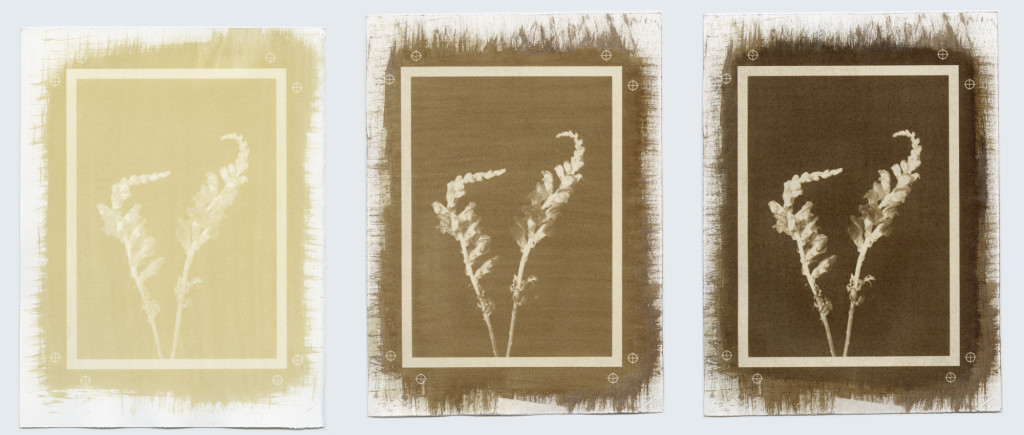The gum bichromate process was developed in the 1850’s, becoming popular with Pictorialist photographers in the late nineteenth and early twentieth centuries due to the painterly effect of the process.
The print emulsion consists of a saturated solution of potassium dichromate, gum arabic, and a coloring agent, in this case, watercolor pigment. When exposed to UV light, the dichromate will harden the gum in proportion to the amount of light received, rendering it insoluble. The exposed print is then developed in a bath of plain water, during which time the areas of the print that have not hardened will release the pigment from the emulsion.
Because the dichromate requires exposure to UV light to affect the gum, it is necessary to make contact prints from negatives the same size as the final print.
The images for the Parallel series are shot on medium format black and white film and developed in pyro. The negatives are then scanned and digitally printed to produce the enlarged negative.
The prints are made on Arches Platine paper, sized with gelatin. The finished print consists of three separate exposures printed in registration: the first layer includes no pigment, which produces a light, honey-colored image; the second layer is printed with a sepia pigment; and the third layer is printed with a lamp black pigment. Each layer must be fully processed and dried before subsequent layers can be applied.
